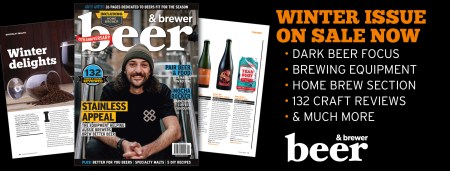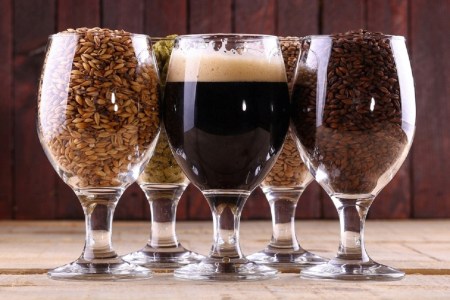
In his continuing series of Deep Dive articles, Brightstar‘s brewer Steve Brockman steers you through making the most of stout weather with some tips on brewing them.
Although it may be tempting to let your creative juices go wild, simple recipes often make the best stouts.
WATER: Almost any water profile works well for stouts, with the exception of very soft water. Most brewers will add calcium sulphate (gypsum) to the mash in order to counteract the acidic darker malts ability to drive the mash pH down.
YEAST: Aim for one of English origin, that offers attention in the mid-range to leave plenty of body. Plan your recipe to have a final gravity around 2.5 – 5.0 Plato (1.010 to 1.020 specific gravity).
HOPS: Don’t overthink them. Classic varieties such as East Kent Goldings and Fuggles work well, as well as clean varieties such as Target, Northern Brewer and Willamette. Also, understand that all of the malt profile, sweetness, and possible adjuncts need balance. Use bitterness, and aim for total IBUs from 45 to 70 with mainly larger additions early in the boil at the bittering stage.
MALTS: They’re a major component of how a stout will turn out so understanding how to get the best out of them is critical to making a great one. Many general drinkers think stout is made up of a large percentage of darker malts, but the reality is roasted malts only make up around 10% of the overall grist. A good base recipe for all stouts is very simple: aim for 70% base malt, 20% flaked barley and 10% roasted malt (aiming for a 500 Lovibond or darker malt). When considering base malts, especially at homebrew level, go for the best quality malt you can. Many brewers love to put in a floor malted variety such as Marris Otter or Golden Promise for a deep, malt flavour throughout. Closer to home, many of our domestic malt producers have an Ale Malt that would be perfect in a stout recipe. Flaked barley brings significantly increased body and mouthfeel to a stout but needs to be mashed. Anything flaked will generally be beneficial in a stout, be it barley, wheat or oats.
A quick word on terminology here, as many brewers confuse the terms rolled, flaked and torrefied. Rolled and flaked processes are very similar, where the grain is rolled between large rollers – a process that generates heat and causes some gelatinisation. Flaked grains differ in that they are wetted before the process, thus increasing this gelatinisation. This means they can be included into the mash, and mash enzymes will convert the starch within them into sugars. Rolled grains, especially oats, may or may not be pre-wetted. Products listed as “Old Fashioned Rolled Oats” are not wetted before being rolled. These have decreased rates of gelatinisation, and therefore less starch available to convert to simple sugars in the mash. If you are sourcing rolled oats/wheat for a homebrew, it’s best to visit your homebrew store to buy brewing-specific rolled grains. “Torrefied” is a completely different process in which grains are heated up to temperatures until they “pop”. They also positively affect head retention, but bring a flavour to the beer as well, similar to the breakfast cereals we have that feature them, such as puffed wheat or “rice bubbles”.
Sticking to the general recipe for stouts will land you in the ballpark of the style. Selecting and dialling in your roasted malts for the style of beer you are brewing can be the difference between a good and world class stout.
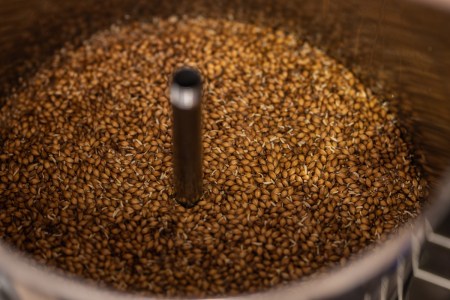
Evaluating darker malts
The problem with roasted and darker malts is it’s often hard to work out exactly how the malt you have will present in a beer. Roasting levels can vary significantly between maltsters, and each maltster’s process can alter the flavour differently. Certificates of analysis supplied with malts can help, as do general guidelines found on most malting websites.
The best, and most fun, way to work out what flavours each malt will bring to your stout recipe is to perform mini-mashes. Go to your local homebrew store, or ask your malting rep for a sample kit. For each malt type you’d like to test, mix approximately 100g of milled malt, with 250mL of water (equivalent to a 2.5 to 1 liquor-to-grist ratio employed in most stout mashes). While you can do this in a pot, and then strain through a colander/sieve, you may find the easiest way is a coffee plunger. Make sure the water is approximately 65°C to 75°C, to mimic mash temperatures and after five minutes plunge/sieve/separate the liquid from the grain. Allow the sample to cool and then smell and taste the wort to pick characters. Having several samples helps to differentiate, so aim to have three or more samples.
When comparing, push yourself to try and really describe the malt. If you identify a malt is more chocolatey than the rest, try to identify what kind of chocolate: is it baking chocolate? Dutch Cocoa? Drinking chocolate? Rich creamy chocolate? The more notes and observations made in your malt helps to shape your beer recipe later.
If you’re searching for a dry Irish stout, definitely give a high quality roasted barley a go. If you’re looking for colour without the acrid bitterness you can sometimes get from high levels of roasted malt, try dehusked varieties. Briess has a very popular de-husked roasted wheat called Midnight Wheat which delivers colour with very little flavour. Weyermann has de-husked roasted malts with their Carafa range (Carafa Type III is good for bold colour while Carafa Type I can help dial in colours on all sorts of beers).
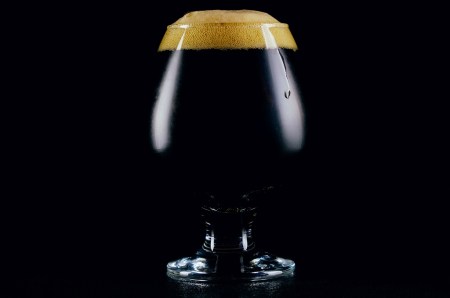
How to get the colour right
A stout has to be dark. It is acceptable for a dark stout to be held to the light and have a ruby maroon edge, but the defining characteristic of a stout is a dark colour.
You can avoid harshness and dial in that colour by delaying your addition of the roasted malts portion of your grist. Perform your mash as usual, without the roasted malts, all the way through the regular rest and iodine test. As you vorlauf (or recirculate) you can add in your roasted malt, finely crushed in a coffee grinder or herb processor. As the beer recirculates, the colour will get darker. If you’re unsure, add the malt in stages.
A small tip: when you assess the colour of your wort, it helps to grab a glass of it rather than look into your brewing vessel, as large volumes of liquid often look much darker than they are. Professional brewers can use their sight glasses to assess the colour, using a torchlight to ensure their vorlauf is complete (no grains or material in suspension) before moving to kettle. Of course there’s always emergency situations where the colour is not going right for whatever reason so having a bit of malt-derived colour like Weyermann’s Sinamar on hand is very handy in a pinch.
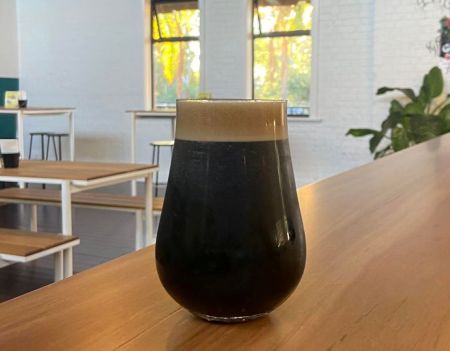
Pulling it all together
Traditional stouts are generally quite low in alcohol (3.7 to 5.2% ABV). Ones at the lower level benefit from flaked grains and careful incorporation of roasted malt characters you’d like to feature. As you move up into imperial stouts and Russian imperial stouts, alcohol becomes a flavour component. Higher alcohols can present sweet, helping to balance a higher amount of base malt and roasted character malts. Be careful though: higher alcohol sometimes results in thinner bodied beers. If you’re going all the way up to brew a big stout, consider adding in a little caramel/crystal malts as well. Their sweetness helps to balance the bigger stout bitterness and roast characters, but crucially maintain that desirable body.
Immediately after a higher alcohol fermentation, even a well maintained fermentation can smell “hot” or full of fusel alcohols, akin to ethanol and nail polish remover. Don’t fret. Bigger beers, especially stouts, benefit from a bit of time to condition before packaging. This time helps to round out flavours, remove that alcohol burn and produce a beer that is more harmonious.
When thinking about your beer concept, really burrow down on the flavours you want in the final beer. Realise that some of the flavours and characters will need assistance from the base stout to really shine. For instance, if you’re thinking of adding sweetness via lactose in a milk stout, bump up a little roast malt in your recipe to balance. Coffee is another common addition. The coffee’s own roast brings plenty of flavour so you may need to dial down the roast malt in your recipe.
Oaked stouts can be delicious and picking medium roasted, American oak chips brings that classic vanillin, coconut-cinnamon oak character. French oak presents more savoury and elegant with notes of vanillin, chocolate and coffee. A lighter roast Hungarian chip can bring spiciness. Be sure to sterilise by steeping in very hot water before adding.
Barrel aged beers build on oak, but present their own challenges. Latent spirits soaked in the wood will increase your alcohol levels, and thin your beer. Beers spending time in barrels will experience micro-oxidation from the wood. Build your recipe with plenty of residual body (high final gravity) to counteract the thinning effect of the alcohol, and a deft touch with some caramel malts will take advantage of the oxidation.
In our soon-to-be-released Spring edition, Steve will be looking at mastering the mid-strength while we give close attention to the Aussie pale ale – with features, recipes and reviews – and plenty more. Subscribe to Beer & Brewer magazine.
